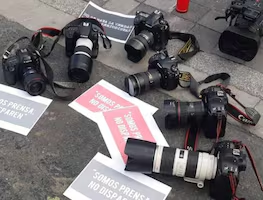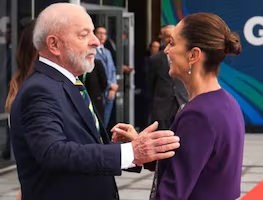Más Información

Artículo 19 teme por la integridad de periodistas en EU; Trump amenazó con represalias por coberturas negativas

Sheinbaum y Lula sostiene llamada telefónica; “vamos a fortalecer relaciones culturales y educativas”, informan

Elección judicial: INE perfila lineamientos para campañas; aspirantes no podrán promocionarse en vía pública

Él era Édgar Guzmán López, hijo de “El Chapo” y del que atacaron monumento funerario en Sinaloa; fue asesinado en 2008
With the objective of restoring, documenting, and promoting Mayan culture in all the world, Google, in collaboration with the British Museum and Mexico’s National Institute of Anthropology and History (INAH) created a project that consists in digitalizing images and documents dating from 1891 to our days about the pre-Colonial civilization in Mexico, Belize, Honduras, and Guatemala.
The content is available through Google Arts & Culture ; it has before and after pictures of the most important cities, videos, and information of Mayan civilization . The content of the project is based on the photographic archive of archeologist Alfred Maudslay that belong to the English institution.
Maudslay carried out a series of travels to Central America to document the characteristics of the Maya such as their way to do art , their garments , tools , and rituals , in addition to the archeology of the most important cities, such as Palenque , in Chiapas, and Chichén Itzá , in Yucatán.
The archeologist’s archive was also used to duplicate the hieroglyphic stair of Palenque’s Palace with the idea of preserving the original. This preservation consists of putting a gypsum board over the stair and then the duplicate.
With this, the steps will no longer be exposed to the weather . Currently, experts are studying the way to transport the boards to the archeological site ; their placement is planned for next November .
The project to create the website and digitalize the files took three years. Two years were required for digitalizing Maudslay’s archive , made up of over 800 files about the ancient civilization.
As part of the project, Google distributed the documents to the museums of the rural communities of the territory that used to be settled by the Maya so that inhabitants can have access to the investigation, as informed Miguel Alva , Marketing director of Google Mexico .
mp









